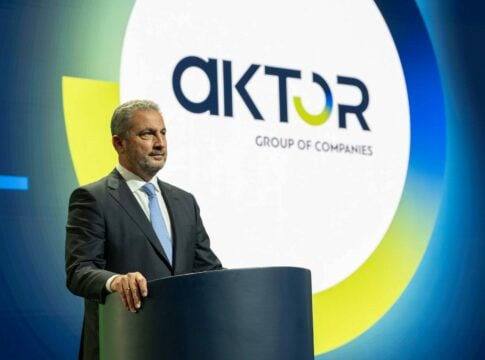The Greek economy will continue to grow at higher rates than the eurozone average in 2024 and in 2025. Exports, investments and private consumption are expected to contribute to the continued growth of the economy, as, according to the spring European Commission forecasts, the growth rate will reach 2.2% in 2024 and 2.3% in 2025. Inflation (harmonised) is estimated to fall to 2.1% next year while debt will further decline.
“Following a very strong post pandemic recovery, in 2023, real GDP growth was still high at 2%. It remains well above Greece’s long-term growth potential and the euro area average. Economic activity was driven by private consumption, which benefited from rising real disposable incomes, by investment in construction, and by net exports, while inventories were a drag on growth.”
“With pent-up demand largely exhausted, private consumption is now mainly supported by rising real income and it is set to increase at a slightly lower rate in 2024. The projected gradual easing of financing conditions and the accelerated implementation of RRP-related projects are forecast to stimulate gross fixed capital formation, which is expected to pick up from 4.0% in 2023 to 6.7% in 2024. The gradual rebound in external demand is also expected to support export growth, compounded by higher export market shares following competitiveness gains. However, the accelerating growth in investment, which has a significant import content, is set to induce higher import demand. Thus, net exports are likely to be growth-neutral and the current account deficit is projected to narrow only moderately over the forecast horizon. Overall, GDP is expected to grow by 2.2% in 2024.”
In 2025, economic growth is projected at 2.3%. Investment is expected to gain further momentum, and become a key contributor to output growth, while household spending is likely to be further supported by a rise in real income.
Labour market segmentation set to slow employment growth
In 2023, the labour market continued to strengthen on the back of solid economic activity, with the unemployment rate falling by 1.4 pps. to 11.1%. Despite still high unemployment, vacancy rates are rising, pointing to increasing labour market shortages in some sectors. Employment is projected to rise further, but the increase is likely to be constrained by labour market segmentation, especially due to skill mismatches, and by a low activity rate. Nominal compensation per employee is expected to grow at a less dynamic pace but to remain solid, exceeding the inflation, as a result of the recent minimum wage increase, a public sector wage hike and a tightening labour market.
Inflation easing gradually amid persistent prices for food and services
Despite energy prices falling further, the disinflation process came to a temporary halt in mid-2023 due to persistently high food inflation, which was exacerbated by the impact of floods and sticky services prices. HICP inflation averaged 4.2% in 2023 and stood at 3.4% in March 2024, i.e. 1 pp. above the euro area average. Price pressures are set to ease only gradually in the near term due to persistent food inflation and solid wage growth. Consumer prices are expected to increase by 2.8% in 2024 and 2.1% in 2025. Inflation excluding energy and food is set to remain slightly higher, at 3.1% and 2.2% in 2024 and 2025 respectively.
Deficit and debt decline on the back of spending restraint and rising revenues
The general government deficit declined from 2.5% of GDP in 2022 to 1.6% in 2023, primarily driven by the phaseout of the measures implemented to mitigate the impact of high energy prices.
The general government budget deficit is forecast to decline further to 1.2% of GDP in 2024. This is mainly the result of muted growth of current expenditure. The forecast takes into account the revenue-increasing reform of the self-employed taxation, which on the one hand includes a 50% reduction of the fixed levy on self-employed, and, on the other hand, applies a minimum income for self-employed as a floor for the assessment of income tax obligations. Almost all energy-support measures have been phased out: only some minor measures remain in place after 2023, which were made permanent, with a budgetary cost of around 0.1% of GDP.
The general government deficit is expected to decrease further to 0.8% of GDP in 2025 based on unchanged policies. This drop is set to be underpinned by the muted growth of the public wage bill. By contrast, the expected 0.5 pps. reduction of the social security contribution rates and the complete elimination of the fixed levy on the self-employed are set to reduce revenue growth.
The public debt-to-GDP ratio declined to 161.9% in 2023 driven both by the increase in nominal GDP and the surplus of the primary balance. The ratio is expected to fall further to 153.9% of GDP in 2024 and 149.3% in 2025, helped by increasing primary surpluses, nominal growth and stock-flow adjustments related amongst others to the considerable proceeds from the Egnatia and Attiki Odos road concessions.
The fiscal outlook remains subject to risks. Downside risks stem from pending legal cases, most notably the litigation cases against the Public Properties Company (ETAD). Also, with the increasing minimum wage, wage pressures are building up in the public sector. On the upside, revenues could turn out higher than currently forecast due to the measures that aim to improve tax compliance.













